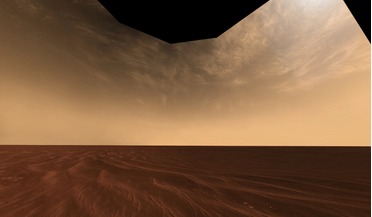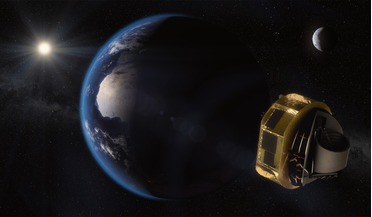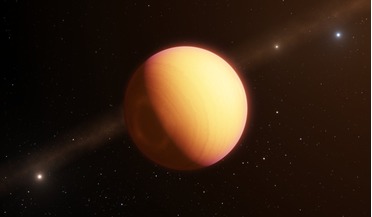 15 August 2016
Was early Mars warmed by cirrus cloud cover?
15 August 2016
Was early Mars warmed by cirrus cloud cover?
... Institute, Penn State Astrobiology Research Center and NASA Astrobiology Institute Virtual Planetary Laboratory, have constructed atmospheric models to test whether cirrus clouds in Mars’ early history could have kept the planet warm enough...
 23 March 2018
ESA selects ARIEL to look closely at exoplanets
23 March 2018
ESA selects ARIEL to look closely at exoplanets
... to observe 1000 exoplanets orbiting distant stars, to make the first large-scale survey of the chemistry of exoplanet atmospheres. Data collected from the mission should help enable scientists answer fundamental questions such as how planetary...
 27 March 2019
Storm-plagued exoplanet revealed in detail with GRAVITY
27 March 2019
Storm-plagued exoplanet revealed in detail with GRAVITY
... result with high vertical winds within the atmosphere preventing the carbon monoxide from reacting with hydrogen...into the interior. This paints a picture of a dynamic atmosphere of a giant exoplanet at birth, undergoing complex physical and ...
 24 May 2021
A CubeSat that produces visible light on the ground to be launched in NASA initiative
24 May 2021
A CubeSat that produces visible light on the ground to be launched in NASA initiative
... and launching a spacecraft that can be commanded by the public is to inspire everyone to learn about telecommunications, spacecraft design, atmospheric and climate science, and orbital mechanics.” The spacecraft will include a UHF antenna led by the...
 23 June 2021
Exoplanets with Earth-like biospheres may be rare
23 June 2021
Exoplanets with Earth-like biospheres may be rare
... such as liquid water and a decent non-toxic atmosphere, are long lost, rendering the surface unliveable. For ... such as a lack of liquid water or a toxic or thin atmosphere, then the chances of intelligent life getting established are pretty slim. And...
 July 2014
Is there a space race or are India and China just coming of age?
July 2014
Is there a space race or are India and China just coming of age?
...team will coordinate with the scientists behind NASA's Mars Atmosphere and Volatile EvolutioN Mission (MAVEN) mission, due ... the same time. Whereas MAVEN will study Mars' upper atmosphere, MOM carries different instruments, include a sensor to detect ...